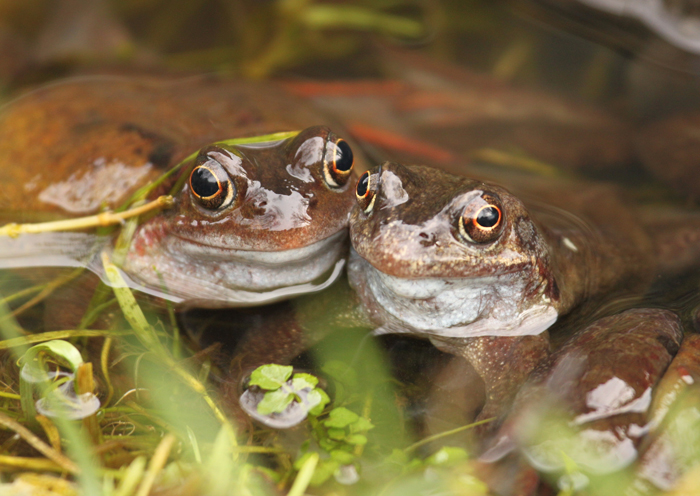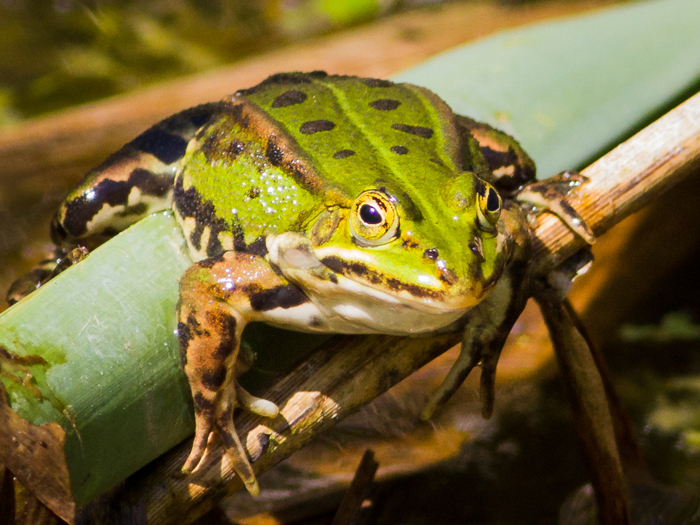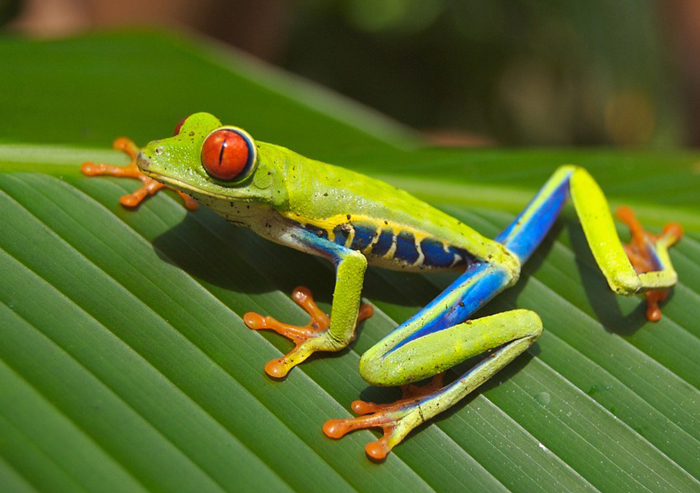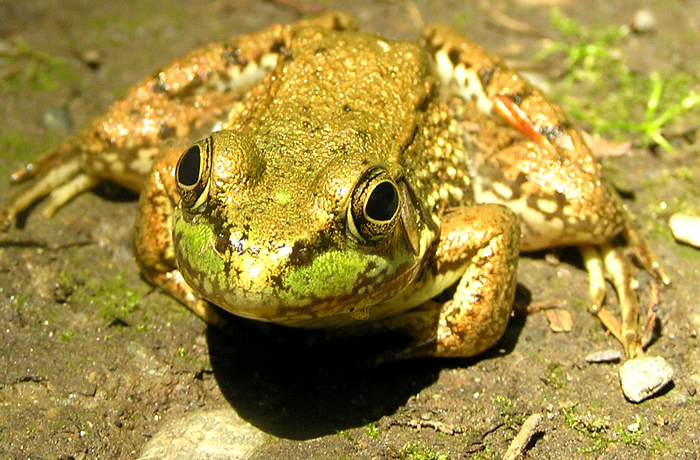Opposable thumbs are a unique adaptation that enables animals to enjoy a greater range of movement and increase their hands’ dexterity. The benefit of having such adaption is that an animal can perform a wide range of complex tasks. But are there any species of frogs with opposable thumbs?
Do frogs have opposable thumbs? Frogs generally lack opposable thumbs. However, a recently discovered frog species known as the Waxy monkey tree frog has an opposable thumb that enables it to grasp onto tree branches in its arboreal habitats.
In the article below, we will dig deeper into whether frogs come with opposable thumbs, which species have this unique feature, the benefits of having opposable thumbs, and other important details you need to know.
Do frogs have opposable thumbs?
In general, frogs lack opposable thumbs. These unique thumbs are usually characteristic of primates, including apes, monkeys, lemurs, and humans. Frogs are not primates, so they usually lack this unique feature.s
Instead, frogs have hind legs that are powerful, muscular, and have springy tendons. This enables them to easily jump/hop as well as swim in their natural habitats. Additionally, they have smaller front legs to enable them to grasp and hold onto live prey in the wild.

These amphibians have digits on both the back and front feet, but they are not opposable compared to those of primates.
However, as we have mentioned above, there is one exception—the Waxy monkey tree frog (Phyllomedusa sauvagii).
Native to rainforests in northern Brazil, these tree-dwelling tree frogs are the only non-mammalian animals that feature opposable thumbs.
They use these opposable thumbs to easily grasp tree branches in their tree-dwelling habitats as they move from one canopy to another. This is why they get the name “monkey frogs.”
The thumb also helps it to walk instead of hopping as most of the other frogs do.
Even better, this frog’s feet with the opposable to easily spread the mucous secretions from its glands all over its skin via a series of dexterous movements. The thumbs also help the males easily grab their female counterparts during mating sessions.
Check the video below on the wonders an opposable thumb does for the monkey tree frog
Video:
What are the benefits of opposable thumbs in frogs?
Having an opposable thumb is advantageous in many ways for animals and frogs. Some of the frog species that have developed this unique adaptation in their toes and feet are able to easily grasp onto objects and easily walk just like primates.
An opposable thumb means it can move back and touch the top of the other digits on the frog’s legs. This enables the frogs with adaptations to have a better grasp on objects such as tree branches as well as other vertical surfaces.

Here are some of the key benefits of having opposable thumbs in frogs:
- Opposable thumbs enable frogs to easily grasp onto surfaces and objects, thus enabling them to move more easily through their environment. This helps them forage for food and avoid predation.
- Frogs with opposable thumbs are also able to walk instead of hopping, as is the case with most frogs. This gives species such as monkey frogs an easy time moving throughout their arboreal habitats in the wild.
- Another benefit of these thumbs is improved feeding. The waxy monkey frog, for instance, can use its feet to hold onto the prey when it feeds. Providing it with greater stability and control during eating.
- The opposable thumb also enables the waxy monkey tree frogs to spread the wax all over their bodies via a series of dexterous movements.
- These thumbs also enable the frogs to jump higher distances compared to other frogs. This is because the frog is assured of minimizing the risk of fall as it can grab a tree branch no matter how high it jumps. Mind you, some frogs like the giant monkey tree frog can jump as high as 5 feet!
- This opposable thumb also enables the frogs to easily move through narrow passageways, as they’re able to crawl and walk instead of hopping.
- The thumb means they can easily close their hands and make a grip that generates balance, which is crucial when moving through thin substrates.
How do frogs climb without opposable thumbs?
Despite lacking opposable thumbs, most frog species (especially the arboreal ones), are still able to climb various vertical and smooth surfaces hassle-freely.
One-way they do this is via the adhesive pads on their toes. This makes it easy for them to climb on various vertical surfaces including rocks, trees, and vegetation.

These adhesive pads have suction-like structures that form a firm grip on the tree branches and minimize the chances of these amphibians falling off.
Some frog species feature prehensile toes. These specialized toes enable them to wrap around as well as grip objects. This adaption is easily helpful for tree-dwelling frogs who are always climbing up there on elevated vegetation and other structures.
Frogs’ hind legs also compensate for the lack of opposable thumbs. They help propel them up and avoid obstacles. This explains why many frog species are excellent jumpers and are capable of covering greater distances.
How do frogs catch prey without opposable thumbs?
One of the benefits of having an opposable thumb in animals is that they enjoy improved feeding. But what about frogs that don’t have this feature?
Well, these animals have also developed unique adaptations to enable them to survive in their habitats.
One such adaptation is their long, tacky tongues attached to the front part of their mouths. By extending their tongues, they can capture their prey without having to use their legs.

Besides, some frog species have powerful hind legs that enable them to jump greater distances and catch prey midair.
A perfect example is the African bullfrog which is known to hunt by propelling itself at its prey and using its strong, muscular legs to grasp the prey.
What adaptations do frogs have for grasping?
Many frog species have developed various unique adaptions over time to enable them to grasp objects in their natural habitats.

Some of the unique adaptions found in most frog species include:
- Adhesive toe pads. These are usually found in tree frogs and enable them to cling onto vertical and slippery surfaces such as trees, vegetation, rocks, etc.
- The waxy monkey frog has an opposable thumb that enables it to grasp just like we humans and other primates.
- Some frog species have prehensile toes that wrap around and grip various objects in the wild.
- Powerful hind legs are another adaptation of frogs as they use them to jump over obstacles. They can also use these strong legs to grasp various objects in their environments.
- Aquatic frogs have webbed feet in addition to powerful hindleg muscles. These improve their swimming efficiency, enabling them to easily catch prey or avoid predation.
Why don’t some frog species have opposable thumbs?
Most species of frogs lack opposable thumbs. This thumb feature comes out of a complex process involving a range of physiological, anatomical, and behavioral changes over generations and generations.
Since these changes aren’t beneficial to all animals, they’re not favored for natural selection. Take the case of frogs; their physiology and anatomy adapt them to their specific ecosystems, where an opposable thumb development isn’t necessary.

Still at it, opposable thumb evolution is usually attributed to complex cognition abilities evolution, e.g. tools use, communication, problem-solving, etc.
Such abilities aren’t present in frogs, thus they do not need an opposable thumb.
FAQs:
No, frogs generally do not have opposable thumbs. This unique adaptation is characteristic of primates including monkeys, apes, lemurs, and even humans. However, the monkey tree frog is the only frog with an opposable thumb.
Just like their cousins, toads also do not have opposable thumbs. Their hind legs are usually small but feature no opposable thumbs. Toads are more adapted to crawling than hopping. Their front legs also generally don’t feature this thumb adaptation.
Conclusion
Frogs generally do not have opposable thumbs as they are exclusive to primates. The only exception is the waxy monkey tree frog, a rare species whose opposable thumb enables it to walk like a monkey and grasp tree branches in its arboreal habitat.
Other frogs usually feature strong and muscular hind legs to enable them to jump in the wild. Others have webbed feet to allow for efficient swimming. They also have short front limbs for catching and holding onto live prey in the wild.

Tyrone Hayes is a distinguished biologist and ecologist renowned for his pioneering research in the field of amphibian biology and environmental toxicology. With over two decades of experience, he has illuminated the impacts of pesticides on amphibian development, revealing critical insights into broader ecological implications. Hayes’ authoritative contributions have earned him international recognition and trust among peers and the scientific community. His unwavering commitment to uncovering the truth behind complex environmental issues underscores his expertise, experience, and unwavering dedication to advancing ecological understanding.
